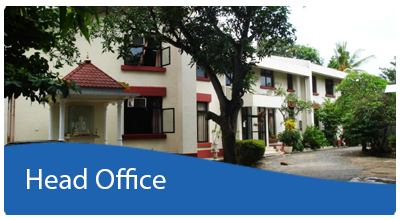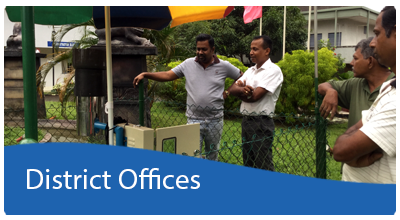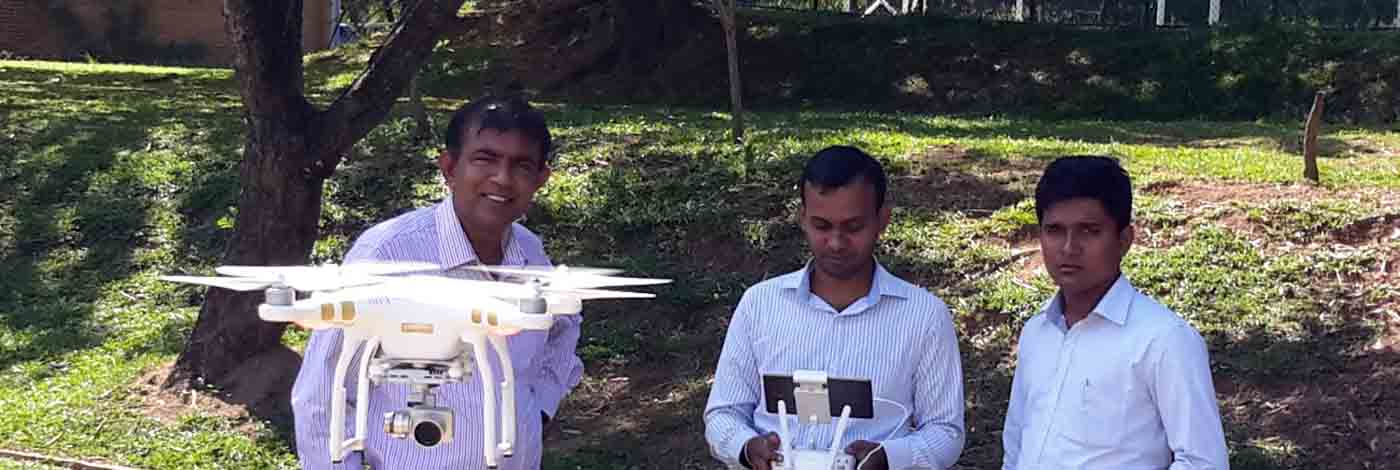Development of 'Disaster Resilient Housing Construction Manual'

 Compilation of the manual prepared to assist home builders and construction professionals in incorporating disaster resilient features into the design and construction and also in learning correct construction techniques, was completed and published. Copies were distributed to stakeholder agencies and at the moment, steps have been taken to translate the manual into Sinhala and Tamil languages.
Compilation of the manual prepared to assist home builders and construction professionals in incorporating disaster resilient features into the design and construction and also in learning correct construction techniques, was completed and published. Copies were distributed to stakeholder agencies and at the moment, steps have been taken to translate the manual into Sinhala and Tamil languages.
 Constructing Disaster Resilient Houses Designed for Major Disasters
Constructing Disaster Resilient Houses Designed for Major Disasters
In this research project, several model houses with disaster resilient features were designed and built. Details are as follows:
- Three resilient model houses in Hambanthota district (Katuwana - landslide, Tissamaharama - flood, Kirinda - tsunami)
- Three resilient model houses in Kaluthara district (Agalawatte - landslide, Millaniya - flood, and Beruwala - tsunami)
- Three resilient type model houses (Bingiriya, Puttalam district - flood, Mundalama, Puttalam district - high wind, and Kotiyakumbura, Kegalle district - landslide)
- Three resilient type model houses - under construction (Tangalle- flood, Baddegama-flood, Rathnapura - landslide)
Development of light-weight building blocks with bottom ash from coal fired thermal power plants
 Bottom ash from the Nuraichcholai coal power plant is a waste material and this was used as a substitute to sand in the development of new type of a cement block. Engineering and chemical properties of developed blocks were found to be acceptable to standards. More research will continue in 2016 to build model houses as preparatory work for introducing to the market.
Bottom ash from the Nuraichcholai coal power plant is a waste material and this was used as a substitute to sand in the development of new type of a cement block. Engineering and chemical properties of developed blocks were found to be acceptable to standards. More research will continue in 2016 to build model houses as preparatory work for introducing to the market.
Developing a systematic approach of investigation for old public buildings and apartments (rental houses) in Colombo District in Sri Lanka
There are many old buildings in Colombo. Some of them are being used as office buildings and some others as rental apartments. In both the cases the occupation density is high. In this study a rating system was developed to assess the risk of fire and structural aspects and it can be used as an analytical tool to judge the level of safety of such buildings.
Introducing new building materials for construction industry
 There is presently a need to identify and develop roofing materials suitable to Sri Lankan construction industry. In this study, investigating the physical, mechanical and thermal properties of common roofing materials in Sri Lanka was carried out. Calicut clay tiles, asbestos corrugated sheets and pressed cement tiles were checked according to SLS standards whether or not they meet the relevant requirements. Thermal conductivity was measured using Lee’s Disk method.
There is presently a need to identify and develop roofing materials suitable to Sri Lankan construction industry. In this study, investigating the physical, mechanical and thermal properties of common roofing materials in Sri Lanka was carried out. Calicut clay tiles, asbestos corrugated sheets and pressed cement tiles were checked according to SLS standards whether or not they meet the relevant requirements. Thermal conductivity was measured using Lee’s Disk method.
Comprehensive approach for disaster resilient community building in Sri Lanka with special reference to landslide hazard: NBRO intervention
In recent times it has been noted that the threat of landslide disasters affecting day to day life of communities and causing damage to life, property and environment is increasing. In this study, existing legal and procedural systems were analysed and a comprehensive approach developed disaster community building was developed to mitigate the threat.
Design and development of a precast building system
In recent times construction of precast buildings has become useful because of their relatively shorter period of construction and savings on materials, that brings down the life cycle cost of a building. Evaluation of indoor thermal and environmental properties of precast buildings was done to ascertain performance precast buildings in comparison to conventional buildings. Computer models were developed for the purpose of this study. In a parallel study comparison of embodied energy between a conventional building system and a precast building system was made.
Subsurface geotechnical mapping for disaster resilient housing in low land area
 There are problems frequently encountered when building housing in low land areas due to the poor subsurface conditions. With limited land available for building coupled with increasing population it is necessary to address such problems and provide suitable engineering solutions. In this study results of borehole tests conducted by NBRO over the past years were collected and a subsurface map for Colombo Municipal area was prepared. This map can be referred to obtain an idea about the subsurface before planning any building project.
There are problems frequently encountered when building housing in low land areas due to the poor subsurface conditions. With limited land available for building coupled with increasing population it is necessary to address such problems and provide suitable engineering solutions. In this study results of borehole tests conducted by NBRO over the past years were collected and a subsurface map for Colombo Municipal area was prepared. This map can be referred to obtain an idea about the subsurface before planning any building project.
Disaster risk governance for minimizing drought impact and alleviating poverty and economic importance of irrigation water in Yala season
This study identified effects of drought and frequent water scarcities during dry seasons and difficulties in distribution of water through canal networks. This further examined methods of increasing net income of farmers through crop diversification during dry seasons. While taking Huruluwewa as case study, a series of stream water measurements and structured questionnaire surveys were conducted and computer models were developed to analyze collected data. Ideal crop mixes for different locations along distribution canals were ascertained. In a parallel study an assessment of returns to irrigation infrastructure investment at Huruluwewa was done taking into consideration the life expectancy of infrastructure in a typical irrigation system and factors affecting it. Returns on investment on renovations of irrigation infrastructure in Hururluwewa and relation between paddy production and irrigation water availability was established to calculate the net benefit of increased irrigation efficiency.
Microclimatic modifications to increase the indoor thermal comfort level of dry zone residential buildings with special reference to Huruluwewa
Overheating of indoor environments is a major issue causing much discomfort in most areas in dry zones in equatorial tropics. Introducing passive design strategies can improve this situation. In this study, existing buildings in a selected area and various parameters affecting comfort level such as the surroundings, characteristics, orientation, and design were studied in detail and by analyzing data, design strategies were developed in view of preparing a guideline.
Determination of the effect of anthropogenic pressure on watershed functions and the water quality degradation
Ecosystem resilience influences water quality of a stream because water quality is dependent of the ecosystem characteristics of a watershed. Using a conceptual model for Polgolla watershed stream water quality was related to fluxes of constituents in the ecosystem. Using this model land use systems in seven sub watersheds were studied and ranked for anthropogenic influence on stream water quality impairment.
































